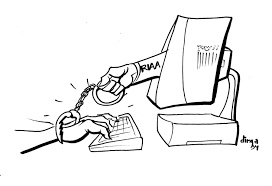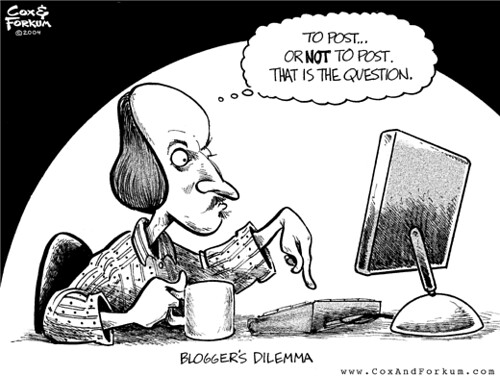Presentation for: EN3008.19 (OM) Te[/ch]xtuality, Technotexts and Hypertexts
The Influence of Technology on the Music Industry
This argument is about gaining a better understanding of the impact that technology has had on the music industry in recent years. This piece will look mostly at the negative impacts that technology has had on the music industry but it will also look briefly into some of the more positive impacts it too has created.
Technology has affected the music industry in both a positive and a negative way. While technology allows music to be distributed all over the world at the touch of a button and enables artists to advertise on an unprecedented scale it also allows music to be pirated illegally anywhere, anytime. Music Piracy is the unauthorized duplication of goods protected by intellectual property law, i.e. music that is protected by copyright. This comes in the form of individual’s illegally uploading or downloading music online, online companies who build businesses based on theft and encourage users to break the law and people manufacturing mass numbers of counterfeit CDs for illegal purchase or even merely the copying of a CD for a friend.[1]
How did Music Piracy begin? Music Piracy originated in the 1920s when radio stations first began airing records. Even though stations had purchased the records legally, the frequency of the broadcasts was not tracked. Therefore the artists and writers were receiving no form of payment for their work apart from the money received for the purchase of the original record. Eventually performance rights societies passed legislation to ensure that stations acted fairly in tracking their airplay and paid a blanket licence fee which was then distributed to writers and artists in relation to the airtime they received. While not a perfect solution, most accepted it, as it was better than nothing. Vinyl was impossible to copy and even the invention of the blank tape did little to damage the profits the music industry were raking in, as copying a record to a blank tape was a complex process involving a reel-to-reel machine hooked up to a phonograph receiver and a pre-amplifier, which often resulted in very poor sound quality. Following this was the invention of the cassette tape, this was an easier process thanks to developments in technology but still a lot of sound quality was compromised and it was a long process to record just one tape. This meant that piracy really only existed on a small level as most copying done was only on a very minimal and personal level. 1982 however brought with it the birth of the CD. The first CDs available to the consumer tended to be read only CDs and could not be copied, this appeared to solve the problem of piracy altogether but technology moved faster than the legality and soon the CDs being produced could be copied to any computer with the correct software and then burnt a blank CD. It was this invention of the copy able CD along with the rise in the purchase of home computers that was to provide the initial blow to the music industry.[2]
With the prices of CDs now rising to meet the piracy problem, people started to turn more and more frequently to their own devices for a cheap efficient remedy.
However the utmost challenge to the industry was the invention of the MP3 file or audio compression technology. The invention of the MP3 file by Fraunhofer-Gesellshaft which had begun in 1987 only came to life between 1996 and 1999. After this time its uses were fully utilised and it as a medium sky rocketed. The MP3 file allowed users to search the internet for any song they desired, it allowed them to save any music file to their own computer, and it provided them with a method to share their own music with anyone in the world. It also led to the invention of music sharing facilities online both legal and illegal such as iTunes and LimeWire.

People could now immediately listen to any type of music in their own home without having to leave the house to trawl through their local music store for the CD they desired. It made music more instant, more readily available, and more accessible to people all over the globe, all that it required was a computer and an internet connection. It seemed that the music industry had been completely revolutionised but was it to be for good or for bad?
The question must now be asked, what exactly are the effects of people committing music piracy on the music industry? The Record Industry Association of America, (R.I.A.A.), www.riaa.com, published the following figures on their website to prove the overwhelming negative effect advances in technology has had on the music industry in the last 10 year:
¢ 1999 $14,584.5
¢ 2000 $14,323.0
¢ 2001 $13,740.9
¢ 2002 $12,614.2
¢ 2003 $11,854.4
¢ 2004 $12,345.0
¢ 2005 $12,296.9
¢ 2006 $11,758.2
¢ 2007 $10,372.1
¢ 2008 $8,480.2
These figures (in millions), show the overall size of the sound recording industry based on manufacturers’ shipments for the particular year.[3] The revenue generated from music sales has almost halved in the last ten years and it seems that this is a trend that is set to continue. The R.I.A.A. estimates that global music piracy causes $12.5billion of economic losses every year. This is a mix of job losses, tax losses and income losses.[4] These figures highlight the threat that music piracy has over the livelihoods of artists, writers and record label employees but also over the thousands of people that work within the music industry from music store owners to warehouse workers to sound technicians. Music piracy also effects up and coming musicians as they receive little or no money for anything they produce and they generally resort to giving their music away for free until they gain enough recognition to benefit in any manner from selling it.
Why then with these depressing statistics do people continue to be involved in pirating music when they understand the consequences not just to themselves but to thousands of others also? In our current economic climate it seems much more reasonable to utilise the free resources that are available to us. Why make the trip to the store and pay €20 for a CD when you can just turn on your computer and get it for free? Everyone else is doing it seems to be one justifiable explanation and there is little sign of any repercussions. There is a distance from the legality and from the moral obligation to the artists and writers because it is in a persons own home, on a persons own computer, which they are completely comfortable with and used to. It is also a more selective process instead of having to buy a whole album in order to listen to one song which can be costly you can just download the one song you desire. It is also much easier to find more obscure artists online than it is in a shop particularly if you happen to live in a more remote area. Furthermore by downloading an album for free you can listen to it and see if you will enjoy it before parting with your money.
However the question must be asked is the music industry fighting a losing battle against the pirates? Can music piracy be stopped?

It appears that technology is moving so fast that it is impossible to police all of the music industry. Not to mind enough to counteract the huge losses that are incurred through music piracy. Record companies are prosecuting individuals but it is a slow process with few beneficial results. In America religion is being used as a factor to try and discourage people from pirating music, phrases such as “Would Jesus pirate music?” are common to try and discourage people from pirating on moral grounds. Some music companies are also introducing sampling facilities which allows the consumer to sample music before buying it, which will encourage people to pay for it if they like it. However it does seem that much more stringent measures will have to be put in place if any real change is to occur.
Are there then any positive effects of technology on the music industry?
Radiohead are one band that decided to try and give the people what they wanted and release their album online. People had to contribute whatever donation they felt was deserved and then received the album in return. The album, the first in four years from Radiohead, sold 122,000 hard copies in the United States in its first week, according to Nielsen SoundScan. Not quite as successful as 2003’s “Hail to the Thief,” but still positive taking into consideration the clear downturn in the music industry in a brief period of time. “Thief” sold approximately 300,000 in its first week in 2003. This provides some evidence that fans and consumers still desire the material good along with the digital.[5] It must be noted however that Radiohead are a well established band with a dedicated fan base that appeal to ages outside the main group involved in piracy 16-29.[6] Of course technology also allows artists to promote themselves and their work, and to reach a wider audience all over the globe than ever before, allowing them to become household names much faster than was ever previously conceivable. Websites like Twitter and Facebook allow self-promotion and personal communication with fans which can only be a positive thing and furthermore it allows new acts to be discovered. However, it also means that new and upcoming bands tend to get lost in the dense maze of online music thanks to websites like MySpace, which is home to countless musical projects.
There will always be the faithful fans who appreciate that the artists and writers have worked to provide us with entertainment and enjoyment and will have the respect to pay for the privilege of listening to the music but there will also always be those who look past this for to benefit themselves. It seems that the music industry has a long way to go before the problem of music piracy will be resolved.
Bibliography
[1] http://www.riaa.com/faq.php





